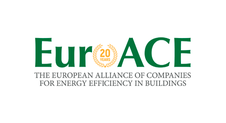Search eceee proceedings
Monitoring efficiency and impact of the energy efficiency and renewable energy measures in the residential sector
Panel: 4. Monitoring and evaluation for greater impact
Authors:
Tadeja Janša, Josef Stefan Institute, Energy Efficiency Centre, Slovenia
Andreja Urbančič, IJS, Slovenia
Barbara Petelin Visočnik, IJS, Slovenia
Gašper Stegnar, IJS, Slovenia
Abstract
As more and more data are available every day we can now develop more detailed analyses than ever before. However, we must pay attention to the comprehensive understanding of the subject specifics and be careful when evaluating and interpreting the results. For the purpose of the research the subsidies for energy efficiency and renewable energy measures in the residential sector (buildings) on a national and municipal level were observed. The subsidies are granted by the Eco Fund, a public fund specialised in promoting environmental actions.
The main goal of this research was to:
– Analyse the cost efficiency of the implemented measures and
– Develop climate indicators on the municipal level.
The cost efficiency of the paid subsidies targeted at the CO2 emission reduction and energy savings in households was evaluated. Ex-ante and Ex-post analysis were carried out with the focus on measures for increasing renewable energy use (installation of solar thermal collectors, heat pumps, biomass boilers etc.). The effects of these measures were assessed using the methods for determining energy savings, which were applied in line with the Article 7 of the Energy Efficiency Directive (2012/27/EU). Cost efficiency of the measures in Ex-post varied from 853 €/tCO2 for the solar thermal collectors to - 614 €/tCO2 for the air to water heat pumps. Cost efficiency of the measures in Ex-ante varied from 418 €/tCO2, again for the solar thermal collectors, to - 282 €/tCO2 for the water to water heat pumps.
Results presented are focusing on wood biomass boilers only. The Ex-post analysis was carried out for the “old” and the implemented new technologies, and the Ex-ante analysis was carried out for the “reference” and the implemented new technologies. The boilers were divided into the groups according to the type of the biomass used (pellets, chips, logs) and the nominal heat output. Results show that most commonly the boilers from the groups with the lowest heat output (≤ 25 kW for chips, ≤ 20 kW for logs) were installed, except for the pellet fired boilers, where upper medium group (> 27 and ≤ 30 kW) was the most common. From the CO2 emission reduction point installing high heat output boiler was more efficient than low heat output boiler where cost efficiency varied from - 2 to - 257 €/tCO2 in Ex-post and - 53 to -172 €/tCO2 in Ex-ante analysis.
The climate indicators developed on the municipal level were designed in order to get the information on how active the residents are in the implementation of the energy efficiency and renewable energy measures and to observe the differences across the country. To get an overview about the actions taken an application “Local climate action scoreboard” was designed. Two of the indicators from the scoreboard refer also to the energy efficiency and renewable energy measures in households triggered by the Eco Fund subsidies. In 2016 those subsidies stimulated an average annual investment of around 59 € per capita.
Energy poverty in households is an important issue as almost 40 % of households can’t afford to implement renewable energy and energy efficiency measures. Due to the lack of data, it is a challenge how to design an appropriate energy poverty indicator and how to track it properly. Additional steps will be needed to further develop this indicator and to get useful data for research in this area.
The research gave not only an insight into the climate actions in the residential sector but also a more detailed, holistic look into the matter. In addition, differences in the use of subsidies among the households from different income groups have been analysed as well. The analyses performed includes the elements of the future monitoring system for the Integrated National Energy and Climate Plan (NECP) for the years 2021 to 2030, where energy efficiency and climate actions play an import role.
Downloads
Download this presentation as pdf: 4-104-19_Jansa_Presentation.pdf
Panels of
1. The dynamics of limiting (energy) consumption
2. What's next in energy policy?
4. Monitoring and evaluation for greater impact
5. Smart and sustainable communities
7. Make buildings policies great again
8. Buildings: technologies and systems beyond energy efficiency
9. Improving energy efficiency in ICT, appliances and products

























